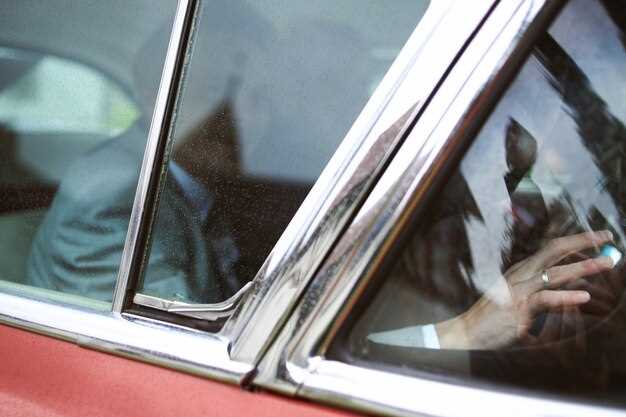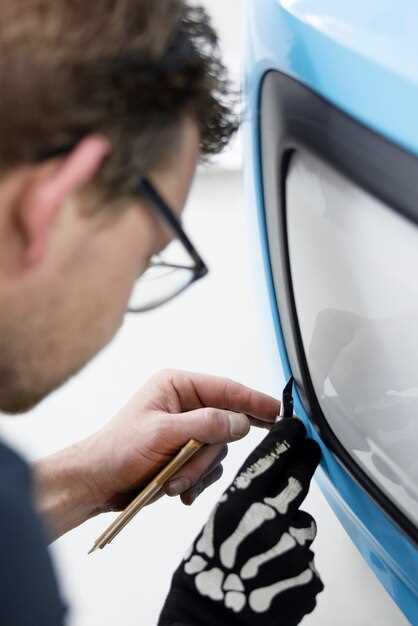
A broken car window can be a frustrating experience for any vehicle owner. Not only does it compromise the security of your car, but it can also expose the interior to the elements and potential theft. Understanding how to replace a broken window yourself can save you time and money, and restore your vehicle’s functionality. In this guide, we will outline the steps to take, the tools you will need, and helpful tips to ensure a smooth replacement process.
First, it is essential to assess the damage and determine whether the entire window needs replacement or if a repair is sufficient. If the crack is extensive or the glass is shattered, replacing the window will be your best option. This guide will focus specifically on the replacement process, providing you with detailed instructions for various types of car windows, including side windows and rear windows.
For a successful replacement, preparation is key. Begin by gathering the necessary tools and materials, such as replacement glass, safety gloves, a screwdriver, and adhesive. Each vehicle model may have unique requirements, so consulting your owner’s manual can provide additional guidance. With the right tools in hand and a step-by-step approach outlined below, you can tackle this repair confidently and effectively.
How to Replace a Broken Car Window: Tips and Guide

Replacing a broken car window can seem daunting, but with the right tools and steps, you can complete the task efficiently. Begin by ensuring your safety; wear gloves and protective eyewear to prevent injury from shards of glass.
First, gather the necessary materials: replacement glass, a flathead screwdriver, a socket wrench set, adhesive sealant (if applicable), and a vacuum or broom for cleaning up shattered glass. You may also need a glass suction cup for handling the new window.
Next, remove the damaged glass. Start by cautiously removing any fragments left in the frame using the screwdriver. If the window has tracks, carefully detach them. For power windows, disconnect the power supply before proceeding. Use the socket wrench to unbolt any components holding the window in place.
Once the broken glass is removed, clean the window frame thoroughly to ensure a smooth surface for installation. Remove any remaining adhesive and debris to prevent issues with the new glass fitting properly.
When ready to install the new window, apply adhesive sealant to the frame if required. Using the glass suction cup, position the new window carefully into the frame. Make sure it fits securely and is aligned correctly to avoid operational issues.
Reassemble any components you previously removed, ensuring all bolts are tightened properly. Reconnect the power supply for power windows and test the functionality. Make sure to clean any remaining debris from inside the car and the surrounding area.
Finally, allow the adhesive to cure as directed by the manufacturer’s instructions. This will ensure the window is secure and functional for long-term use. Regularly check the installation for any signs of loosening and address them immediately to maintain safety.
Assessing the Damage and Choosing the Right Replacement Glass

Before replacing a broken car window, it’s crucial to assess the extent of the damage. Begin by examining the shattered glass closely. Check if the window is completely broken, cracked, or if only a small piece is missing. This will help determine if partial repair is an option or if a full replacement is necessary.
Next, ensure the frame of the window is intact. If the frame is damaged, it may require repair or replacement before installing new glass. Look for bent metal, rust, or any obstructions that could interfere with the new glass fitting properly.
Choosing the right type of replacement glass is essential. Options include OEM (Original Equipment Manufacturer) glass, which matches the original specifications, or aftermarket glass, which can be more affordable but may vary in quality. Consider factors such as warranty, fit, and whether the glass is tempered or laminated. Tempered glass is often preferred for side windows due to its strength and shatter-resistant properties.
Finally, if you’re unsure about assessing the damage or selecting the appropriate replacement, consulting a professional is advisable. They can provide insights on the best type of glass suitable for your vehicle and ensure a proper installation, ultimately preserving the integrity of your car’s structure and safety features.
Tools and Materials Needed for a Successful Window Replacement
Replacing a broken car window requires specific tools and materials to ensure a successful and safe replacement. Here’s a comprehensive list of what you need:
1. Replacement Glass: Obtain a compatible glass pane for your vehicle model. Ensure it is tempered or laminated as required.
2. Tools: Gather essential tools such as:
- Screwdriver Set: A variety of screwdrivers (flat-head and Phillips) will help you remove interior panels and securely fasten the window mechanism.
- Glass Removal Tools: A glass cutter or utility knife is useful if adjustments are necessary for fitting the new glass.
- Trim Removal Tool: This will help you carefully detach any trim or molding surrounding the window without damaging it.
- Lifting Tool: A suction cup or glass lifting tool can assist in maneuvering the new glass into place.
- Socket Set: Include ratchets and sockets for loosening or tightening bolts in the window frame.
3. Adhesives and Sealants: Use specialized adhesive that is designed for automotive glass installation. A polyurethane adhesive is recommended for strong bonding.
4. Safety Gear: Protect yourself with safety glasses and gloves. This will shield you from sharp edges during glass handling.
5. Cleaning Supplies: Have glass cleaner and microfiber cloths ready to clean the edges of the window frame before installation, ensuring a clean surface for proper adhesion.
6. Rags and Towels: Keep rags or towels nearby for any spills or to catch glass shards during the removal process.
By assembling these tools and materials, you ensure that your window replacement process is efficient and effective, leading to a satisfactory repair outcome.
Step-by-Step Process for Removing the Broken Window and Installing the New One
Replacing a broken car window requires careful handling and the right tools. Follow these steps to safely remove the broken glass and install the new window.
- Gather Necessary Tools and Materials:
- Safety gloves
- Safety goggles
- Flathead screwdriver
- Phillips screwdriver
- Glass cutter (if applicable)
- New window glass
- Adhesive or window sealant
- Clean cloth
- Vacuum cleaner (optional)
- Ensure Safety:
Put on safety gloves and goggles to protect yourself from sharp edges and glass shards.
- Remove Door Panel:
Begin by removing the door panel to access the window mechanism. Locate and remove screws or clips using screwdrivers. Carefully pry the panel away from the door frame.
- Detach the Window Regulator:
If the window is still partially intact, disconnect the window regulator or motor. Look for connecting wires and remove any necessary fasteners to free the regulator.
- Remove Broken Glass:
Carefully remove any remaining pieces of broken glass. Use a vacuum cleaner to ensure all shards are cleaned up. For stubborn pieces, use a flathead screwdriver to pry them out gently.
- Prepare for New Window Installation:
Clean the window frame thoroughly. Remove old adhesive or sealant and ensure the surface is smooth for the new window installation.
- Install New Window Glass:
Place the new window into the frame. Ensure that it aligns perfectly with the window track and fits securely. Apply adhesive or window sealant around the edges to secure the glass in place.
- Reconnect the Window Regulator:
Reattach the window regulator or motor, ensuring all connections are secure. Test the operation before fully reassembling the door panel.
- Reinstall Door Panel:
Carefully reattach the door panel, ensuring that all clips and screws are secured. Make sure to reconnect any electrical connections for window controls.
- Test Window Operation:
Before completing the job, test the new window to ensure it opens and closes smoothly. Check for any gaps or leaks around the edges.
Following these steps will help you effectively replace a broken car window, restoring the functionality and appearance of your vehicle.





